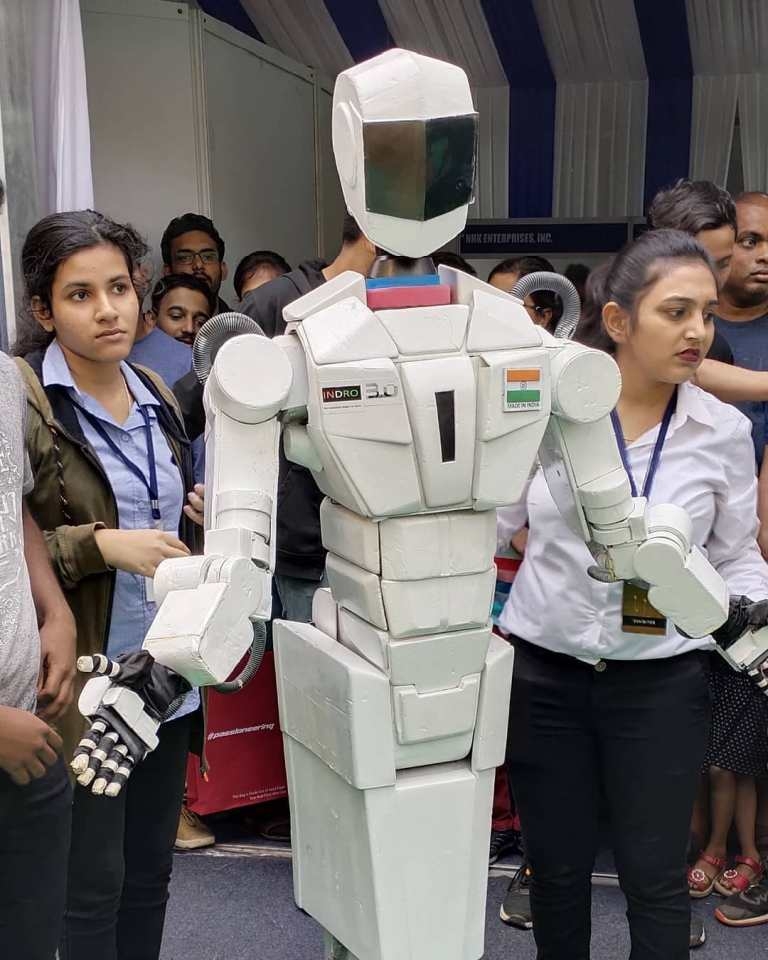
IT News
Mumbai Jan.5
Indian Space Research Organisation (ISRO), which is planning to send three Indian astronauts to space by 2022, as part of India’s ambitious “Gaganyaan” project, will also send manned human missions in solar system in near future, ISRO engineer and scientist Dr. V. R. Lalithambika said here.
While delivering a lecture at “Techfest 2020”, organised by the Indian Institute of Technology (IIT), Bombay, at its Powai Complex in North East Mumbai, Dr. Lalithambika said that now the ISRO which has already gone through the process of sending spacecrafts to moon and mars, will try to send manned space missions also in the solar system.
Dr. Lalithambika, who is heading “Gaganyan mission to send humans to space, said that the space research got momentum after two world wars due to the competition between different nations. The human ingenuity makes one to explore newer and newer avenues. To enter solar system, the speed of the rocket should be 1/5 th of the speed of the light. The light reaches earth within 8 minutes.
To send space crafts or satellites, now the chemical rockets are used, but in future this technology will become outdated and plasma rockets will have to be used. Since the plasma rockets have tremendous speed, it will be possible to reach to planet Jupiter within a week/ month from the moon. With chemical rockets, the estimated duration is 4 years to reach Jupiter from the moon. In future the speed of the chemical rockets will be reduced to large extent and they will become obsolete.That is the reason, the use of plasma rockets is the need of the hour.
To propel humans through space with a 100-billion-Watt laser is one of the ISRO’s projects in the pipeline she said and added that ISRO is serving the nation in various fields including communication, navigation, space science etc and every single person of India is somehow linked with its services. Over 75 per cent of the population of country lives in remote areas and it is advisable to space technology to provide services in various speeds.
The amount of space junk around earth has hit a critical point. Hundreds of thousands of man-made objects are zipping around our planet—from dead satellites to errant nuts and bolts, putting our working satellites at risk. There are at least 5 lakh satellites in the earth orbit. Of these nearly 4000 satellites are obsolete. As such to send satellites in the space is a big problem. To design satellite for the space mission is also a challenge before researchers.
A lot of research goes in finding out how the satellites could be sent into the space using less energy. Similarly the astronauts travelling by space crafts face many health hazards like muscular pain, kidney disorder, eye ailments, brain fatigue, change in thinking system etc.
Dr. Lalithambika later inspected the project “Innovations and major challenges in Oil refinery”, presented by IIT Assistant Professor Pramod Kothmire, as part of the 23rd edition of “Techfest 2020”. The project has been appreciated by Reliance India Ltd, ONGC, BARC and a few other oil refinery industries.
Former Prime Minister of Bhutan and an environmental activist, Dasho Tshering Tobgay speaking on “towards an environmental friendly nation” said that today Bhutan is “carbon neutral” due to strict adherence to pollution control norms and efforts to maintain an ecological balance. That is the reason “climate change” has not affected Bhutan which continues to be peaceful. Besides “we have protected our culture from undue influence of social media”. As such our country is peaceful”.
IIT Bombay is headed for the moon
In the meanwhile IIT Bombay has collaborated with NASA funded “Colorado Space Grant Consortium University of Colorado” at Boulder(USA) for the Lunar Mission. Projet Manager Anmol Sikka and Assistant Project Manager Sanskriti Bhansali said that the IIT Lunar Mission is part of IIT Bombay Student Satellite Project. “We are part of this endeavour and the provisional plan envisages 500 Luna Satellites designed and developed by students from all over the world to fly to the moon. Spacecraft made by IIT-B will be one of them. The size of the spacecraft is 5cm x 5cm with a thickness of 1-2mm. The launch is slated for 2022,which will mark the 50th anniversary of “Apollo 17”, the last manned mission to the moon.
By now over 60,000 people have attended the three-day long Techfest. The visitors are having first hand experience of Air taxis, air drones, ‘Robowars’, The Time Machine(innovation by a Japanese firm), Prosthetics for sports and many other eye catching projects.


